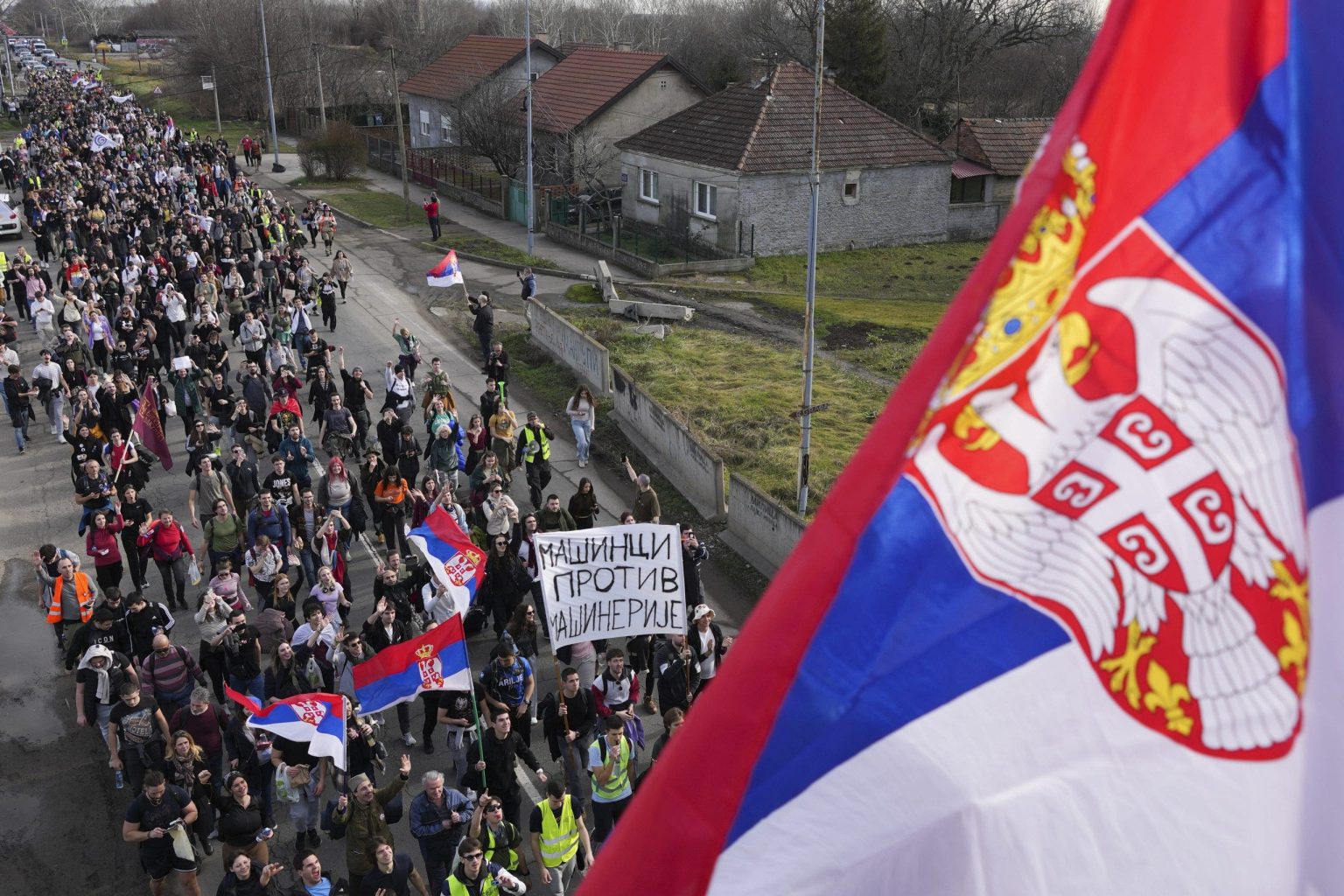Paragraph 1: Mass protests have engulfed Serbia for months, triggered by the tragic collapse of a railway station canopy in Novi Sad on November 1st, which claimed the lives of 15 people. Tens of thousands of university students have taken to the streets, demanding justice and accountability for those responsible for the calamity. The renovations leading to the collapse were spearheaded by two Chinese companies, a factor that has added to public anger. The protests escalated with a general strike, as citizens blocked major streets in Belgrade and occupied university campuses in a powerful display of solidarity with the student-led movement. Observers with decades of experience in the Balkans describe the scale and intensity of these demonstrations as unprecedented.
Paragraph 2: The sustained pressure from the protests has already led to significant political fallout. Prime Minister Milos Vucevic tendered his resignation, becoming the highest-ranking official to step down amidst the crisis. The mayor of Novi Sad, where the tragedy occurred, also resigned. However, these resignations have failed to quell the public outcry, as protesters view them as insufficient and demand more comprehensive action. Demonstrations continue to erupt across the country, particularly in Belgrade, with calls for full transparency regarding the circumstances surrounding the collapse and the prosecution of those responsible.
Paragraph 3: The government’s response to the protests has been criticized as inadequate and evasive. Initially, authorities attempted to ignore the demonstrations, then resorted to using force against protesters and accusing them of being influenced by foreign agents. These tactics have further fueled public anger and amplified concerns about systemic corruption within Serbian institutions. Protesters argue that the railway station collapse is not an isolated incident but a symptom of widespread negligence and corruption that needs to be addressed. The lack of clear answers and accountability from the government has only deepened the public’s distrust.
Paragraph 4: The prime minister’s resignation has created a political vacuum, with the country facing the prospect of either forming a new government within 30 days or holding snap elections. President Aleksandar Vucic has stated that he will make a decision regarding snap elections within the next ten days. These protests pose a significant challenge to Vucic’s 13-year rule, representing the most substantial threat to his authority and his party’s dominance. While the government insists its commitment to stability, reform, and economic development remains unchanged, the protests have undoubtedly shaken the political landscape. Serbia’s Foreign Minister emphasizes the government’s willingness to listen and learn from the situation, but the path forward remains uncertain.
Paragraph 5: A crucial aspect of these protests is the student-led nature of the movement, which distinguishes it from previous challenges to the government. The students have deliberately distanced themselves from the established opposition parties, which are perceived as weak and ineffective, lacking broad public support. This grassroots approach has resonated with a wider segment of the population, who see these protests as a genuine expression of public discontent rather than a politically orchestrated campaign. The core message of the protests is a demand for accountability and the proper functioning of governmental institutions, which are seen as having failed in their duties over the past 13 years of Vucic’s rule.
Paragraph 6: The government’s use of force to suppress the protests has backfired, exacerbating tensions and motivating more people to join the demonstrations. The international community is closely watching the unfolding events in Serbia, with some analysts warning against accepting President Vucic’s attempts to balance relations between the U.S. and its adversaries. Critics point to Serbia’s close ties with China, Russia, and Iran, along with domestic propaganda that portrays the U.S. as an enemy, as evidence of Vucic’s questionable allegiances. The future of Serbia’s political landscape hinges on the government’s response to the protesters’ demands and the president’s decision regarding snap elections, with the potential for significant change looming large.


